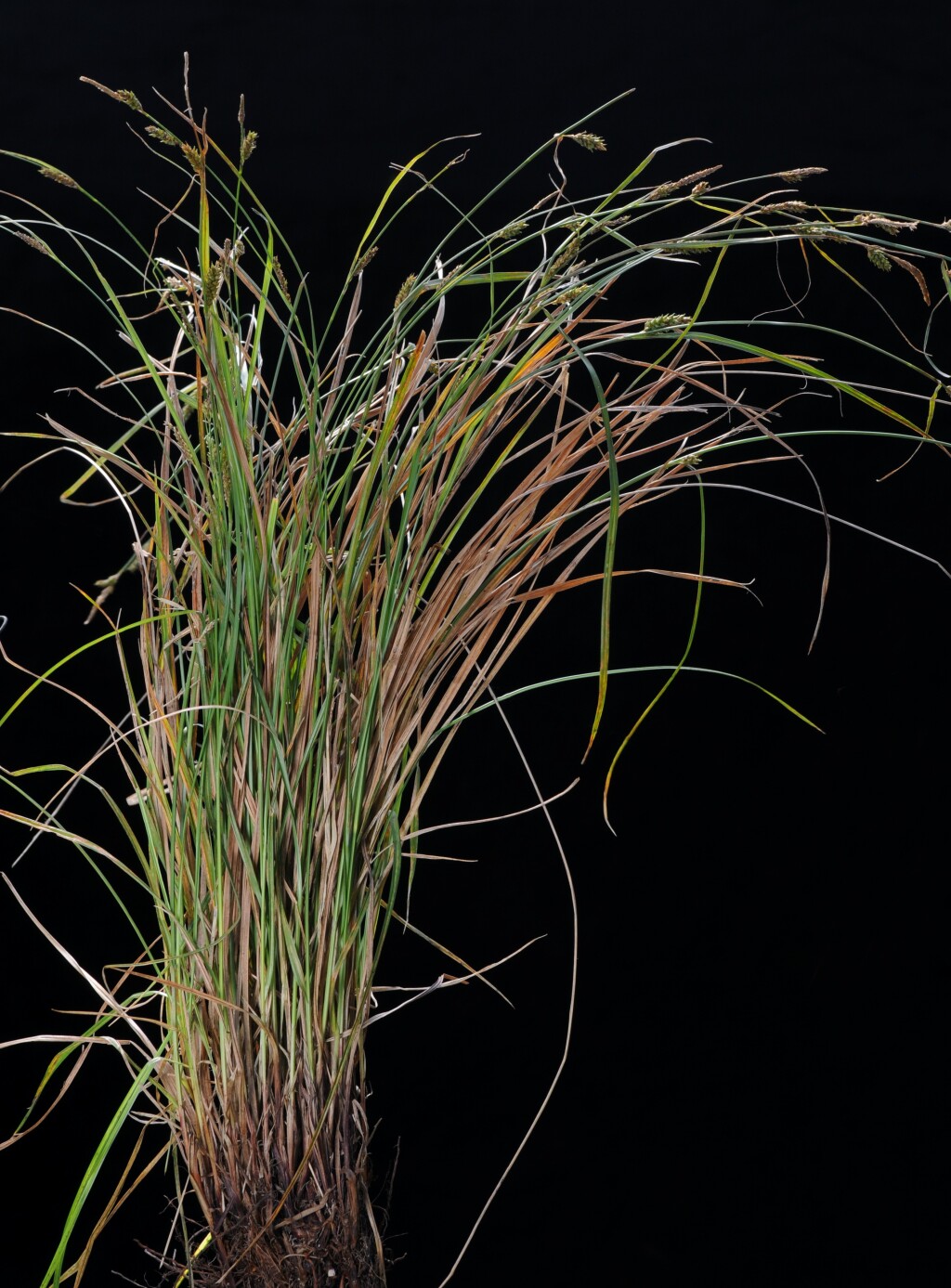Carex distans
L. Distant SedgeRhizome short; shoots ± densely tufted. Culms erect, trigonous-terete, smooth, 20–60 cm long, 0.8–1.2 mm diam. Leaves 20–35 cm long, 1.7–3.5 mm diam., green; sheath pale to dark brown, with reddish streaks, with inner face herbaceous, the apex truncate or on stem leaves with a tongue-like extension; ligule obtuse to subacute, 2–3 mm long, not appearing tubular (i.e. at the sheath apex, the front face does not extend upwards beyond the point of attachment of the blade margins), red-dotted. Inflorescence erect, with 3–5 spikes solitary at nodes; lowest involucral bract exceeding spike and longer than inflorescence. Spikes sessile to subsessile, distant, erect to spreading at maturity; upper 1(–2) spikes male, 1.5–3(–4) cm long; male glumes 3–4 mm long, obovate, usually purplish brown at least when young, apex subacute to obtuse-mucronate; lower spikes female, 1.0–3 cm long; female glumes 2.5–3.5 mm long, ovate-oblong, apex acute to obtuse, pale brown to pale red brown; utricles inserted at angle of 45–60° to stem axis utricles; utricles 3.5–4.5 mm long, 1.5–2.0 mm diam., trigonous-ellipsoid, distinctly nerved, greenish to brown, red-dotted; beak c. 0.7–0.8 mm long, with apex bifid and minutely scabrous; style 3-fid. Nut trigonous-ellipsoid, yellow-brown. (Description based on Victorian plants). Flowers spring–summer.
GipP. Native to most of Europe, northern Africa, Middle East, Russia. Naturalised in North America. Known only from Tootgarook Swamp on the Mornington Peninsula, Victoria, where abundantly naturalised, and behaving as an aggresive environmental weed. It was first collected at the site in 1995.
Carex distans is very variable across its natural distrubution; it is accepted at present that the Tootgarook plants represent this species. It is very similar to C. punctata, see key for differences. In addition to the differences outlined in the key, in C. distans the apex of the inner face of the leaf sheath on stem leaves has a tongue-like extension, and utricles are usually less shiny. It is also superficially similar to C. gaudichaudiana, from which it is readily distinguished by its short rhizomes, and 3-fid styles (sometimes occasional flowers are 3-fid within an inflorescence in C. gaudichaudiana), and lacks apical papillae on the utricle.
 Spinning
Spinning
